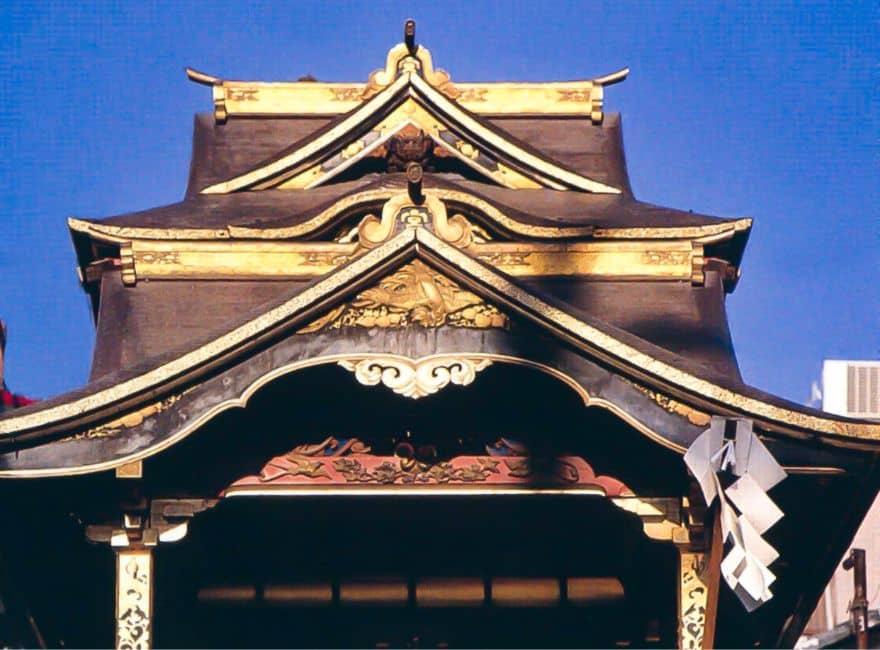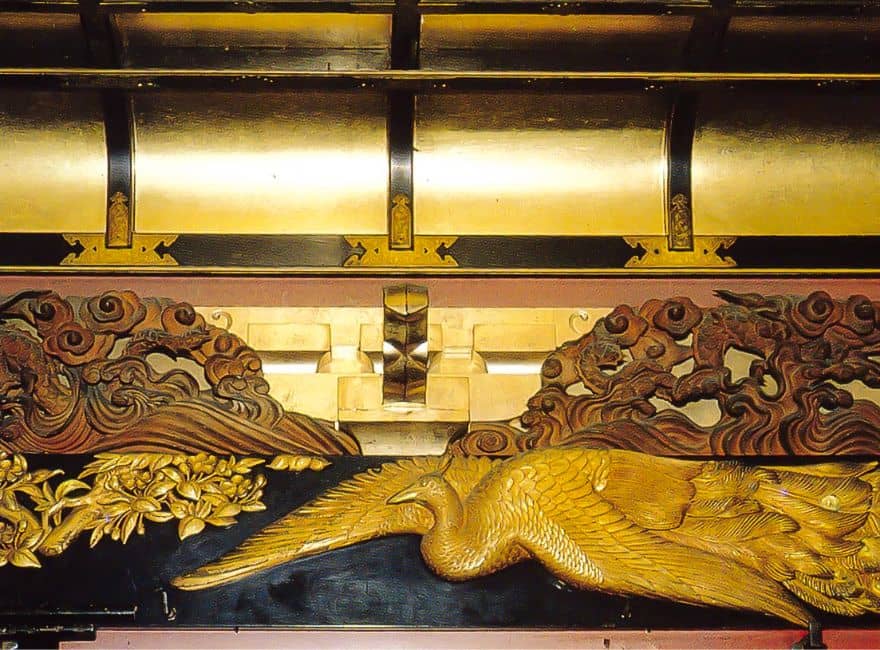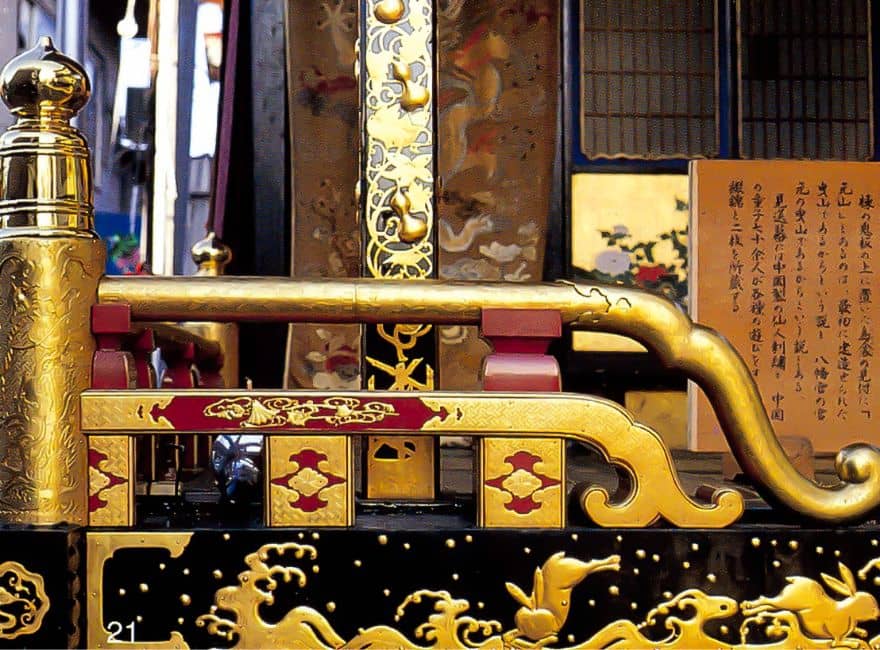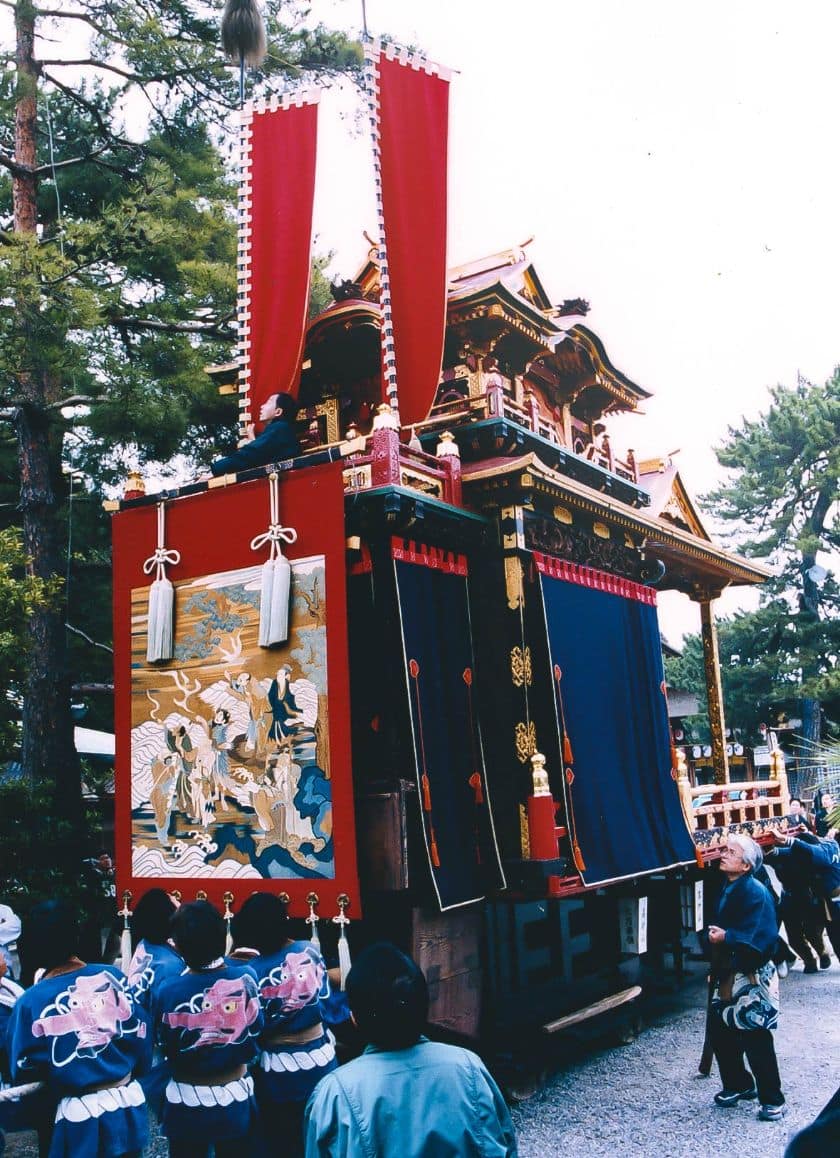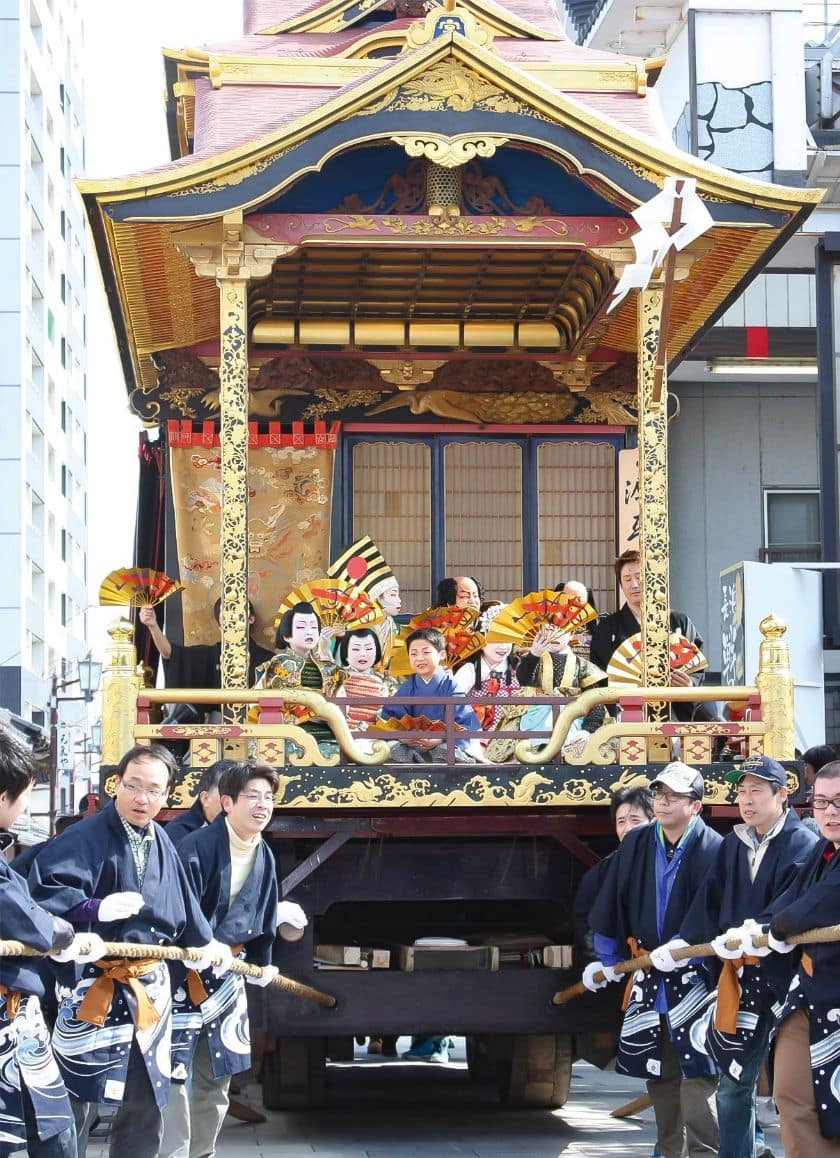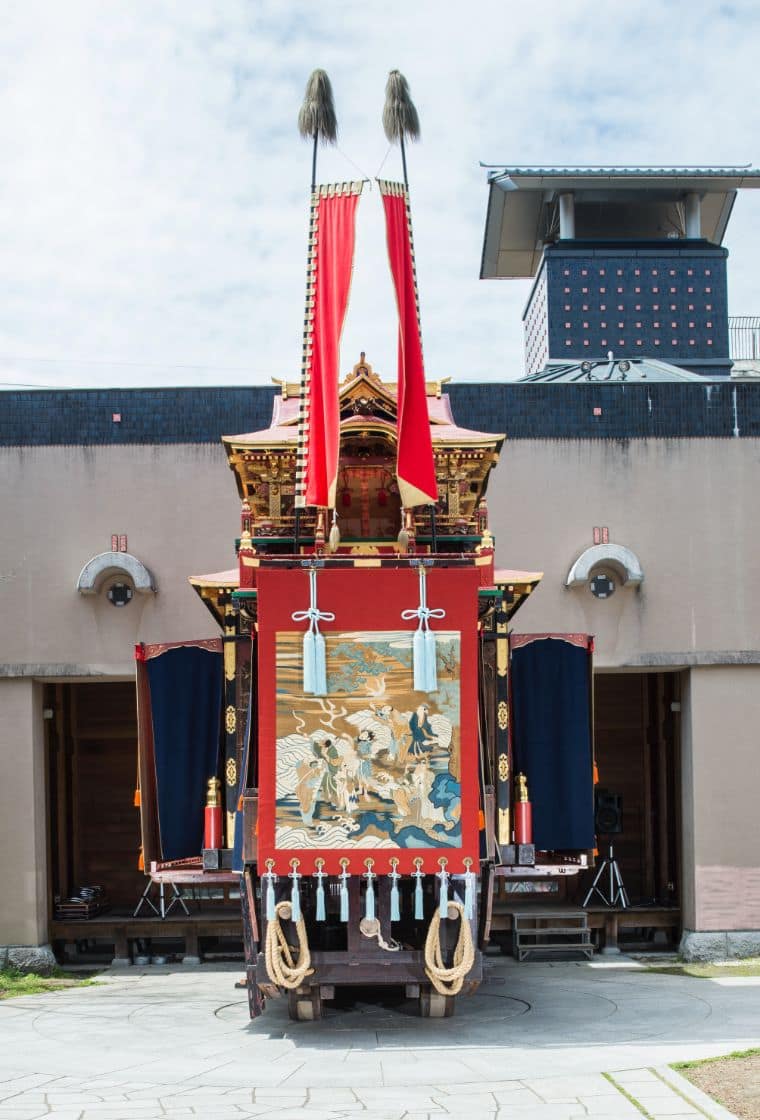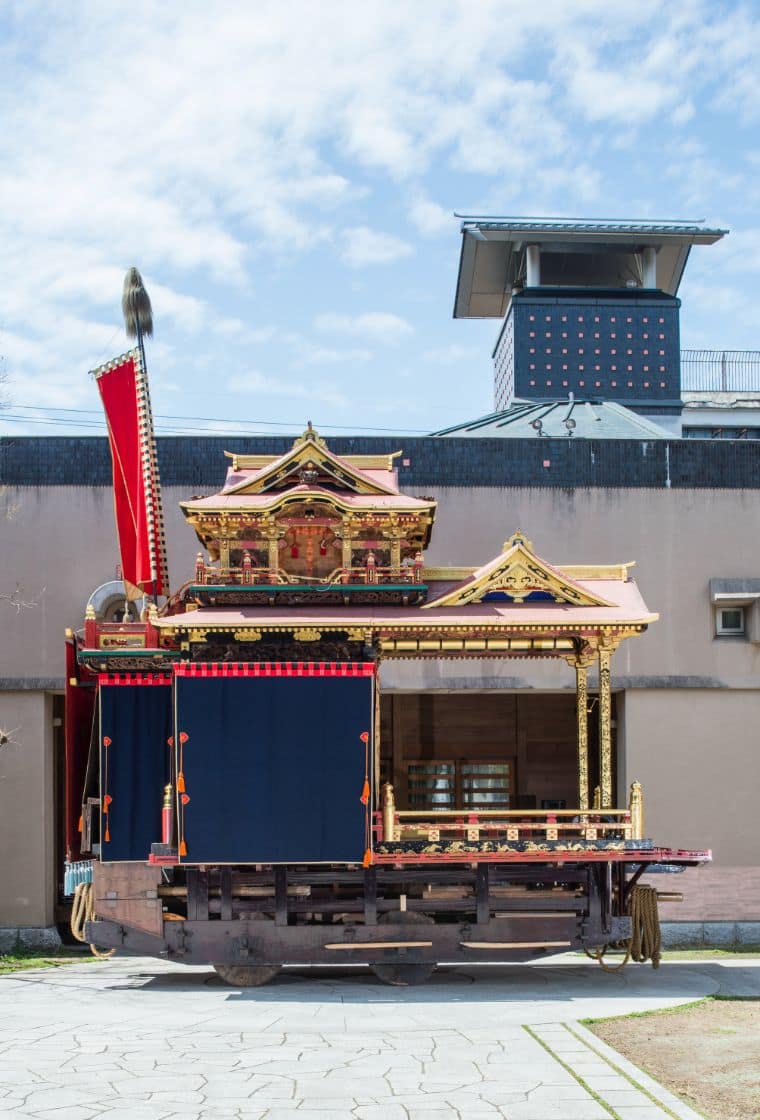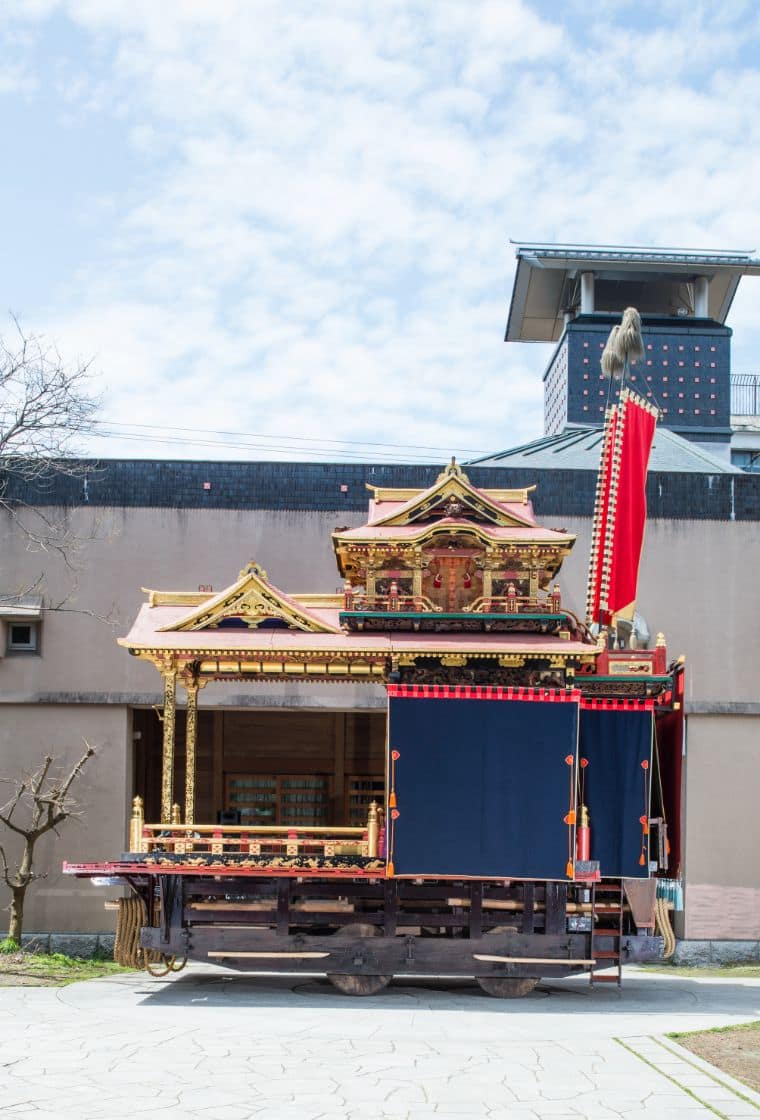Introduction to Takasagozan


Takasagozan Miyamachi-gumi
The pavilion is built in the eight-building style with a Chinese gable at the eaves. The stage roof is gabled, with staggered gables on both sides, the character for “Miya” on the hakotouki board, and the character for “Motoyama” on the tori-line.
On the outer part of the side of the dressing room, there is a wood carving of “A group of monkeys playing on a persimmon tree,” which is an excellent work with an interesting composition. The front pillar of the stage is entirely covered by a decorative metal fittings with “Gourd Arabesque on Clouds and Hedges” carved in openwork. The dais is decorated with a half carved and gilded “Rabbit Running on the Waves”. The “Peonies and small birds” on the stage shoji was painted by Otsuka Giho.
The farewell curtains are either embroidered with “Eight Immortals” or woven with “Karako-gyo” (Chinese Children Playing).
The main body of the floats was repaired in 1745, and it is believed to have been built before then. The pavilion was made by Fujioka Jyubei Yasunori in 1816.
-

Panoramic view of the roof area -

Large beam ornamental metal fittings and wood columns -

parapet on a stage
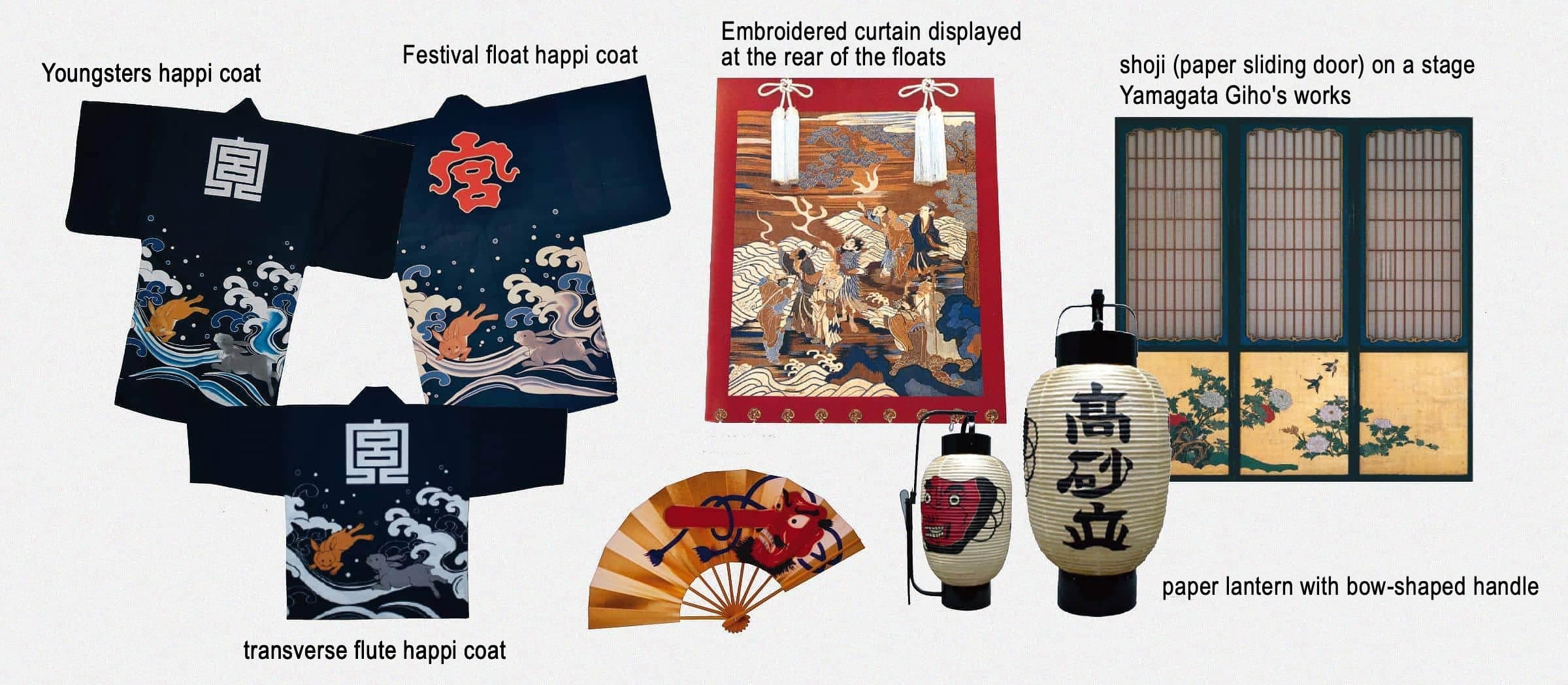
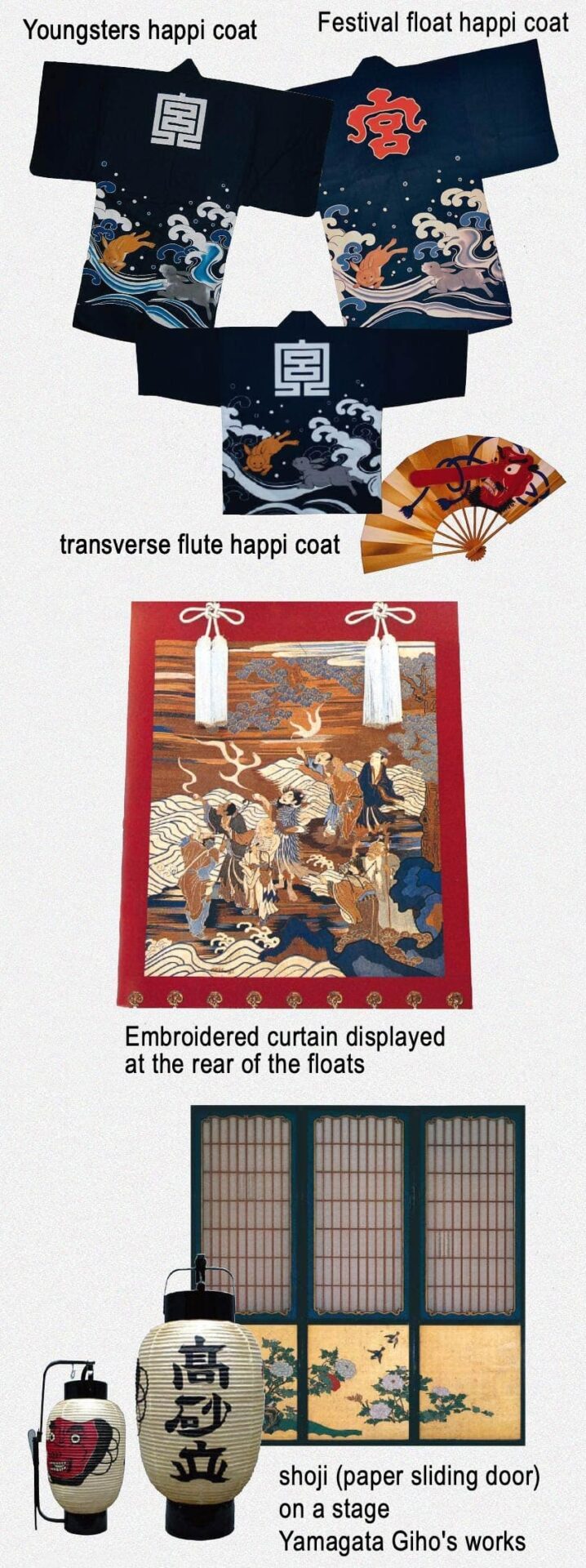
Takasagozan History and Description
Date of construction
The current Hikiyama in Nagahama was built by Hideyoshi Hashiba when he was in Nagahama, and was later rebuilt. Takasagozan may have followed this tradition, but the date of its reconstruction is not known. However, there are documents showing that it was repaired in 1745, so there is no doubt that the current Takasagozan was built before that time. Of the 12 existing Hikiyama, the oldest with a known construction date is Seikaizan, built in 1755, but Takasagozan is older than Seikaizan because it was repaired in Enkyo 2 (1745).
There is a legend among the elders of Takasagozan that “the Hikiyama in Miyagawa (now Miyajihigashimachi, Nagahama City) was the old Hikiyama of The legend also goes that “the Hikiyama in Miyagawa was originally the mountain of Takasagozan in Miyamachi. However, the Miyagawa Hikiyama has been restored to its former glory. However, when the Miyagawa floats “Sassatsukan” was investigated last year, an inscription in ink was found stating that it was made by Fujioka Izumi a resident of Nagahama, on the fourth day of the fourth month of the fourth month of the eleventh month in the year of the Kyouwa era. This inscription revealed that the “Sassatsukan” was not an old floats of the Miyamachi-gumi, but was built in Miyagawa.
However, according to the endorsement on the farewell curtain, the Hikiyama was not built for the first time in Kyowa 2, but was already in existence 44 years earlier, in Horeki 8, and it is thought that this old Hikiyama of Miyagawa was the Hikiyama of the old Miyamachi group, which had been handed down among the elders of Miyagawa and the Miyamachigumi.
Construction and remodeling of the second floor
The pavilion on Takasagozan was newly built and added in Bunka 13.
The pavilion must be built as wide as possible to accommodate a certain number of transverse flute.
Therefore, when the pavilion was built at Takasagozan, the stage roof was modified to place the front part of the pavilion on the rear part of the lower stage roof.
The eaves of the roof are modeled after a hiwadabuki roof, and the flat roof is made of shingles with a shingle roofing pattern, with the shingle joints covered with kibiranuno (raw flat cloth) and the entire surface covered with thick Japanese paper made of raw silk, mixed with bracken paste and coated with a color of hiwadabuki lacquer. In 1926, it was completely replaced and repaired. Similarly, the ceiling boards of the stage were repaired and the decorative metal fittings around the eaves of the pavilion were repaired.
As described above, measurement surveys have revealed that some Hikiyama, such as Takasagozan, have been modified and repaired and repaired again and again, and have become the current Hikiyama.
About Moto-Yama (the first Hikiyama created)
The cylindrical tiles protruding above the onigawara of Takasagozan are all painted in group blue within an oval frame with gold embossed characters reading “Motoyama” (Genzan) or “Motoyama” (Motoyama).
There are two theories about Motoyama: one says that it is the Hikiyama of the Miyamachi group, and the other says that it was the first of the 12 groups in Nagahama to build it. There are two theories about Motoyama: “Motoyama was built by the Miyamachi group.
The Takasagozan group, or Miyamachi-gumi, is located closest to Nagahama Hachimangu Shrine among the 12 groups. The Yamagura was originally located on the grounds of Hachimangu Shrine, near the Hachimangu Shrine’s main hall, or east of the present Hosei-ike, along with the Houmotugura, The Yamagura was also moved to its present location, south of the West Otorii Gate, which is also company-owned property, although outside the shrine grounds.
The old map of the precincts of Nagahama Hachimangu Shrine from Bunsei 4 does not indicate the location of the Miyamachi-gumi Yamagumi, but an old map of Nagahama from Keio 3 clearly indicates that the Yamagura was located in the above location within the precincts.
However, since it is still referred to as “Miyamoto no Yama,” one can imagine that the town of Miyamoto was the first to build a float, ahead of other towns, and therefore, “Moto Yama” must have been named after the fact that it was Miyamoto’s mountain and the first to be built, as legend has it.
Embroidered curtain displayed at the rear of the floats of Karako-yugi (Chinese child play)
The upper one-fifth of the painting is on a dark blue ground with the sun in the center and phoenixes on either side of the sun, and the lower part has a total of 70 scenes of Chinese children playing. The lower part of the work shows a total of seventy scenes of children playing in the Chinese style, including a group playing musical instruments such as flutes, trumpets, and drums, a group playing Go, a group reading, a group playing with cranes, a group playing with a ball, and a group of children holding up a picture and looking at it.
The most common theory for the date of production is that it was made in Japan around the Kyoho period in the middle of the Edo period, but there are two different theories for the place of production: “Japan. However, there are two theories as to where it was made: “Japan,” and “I don’t know whether it was made in Japan or China, but it was probably made in China, since weaving of this size had not yet been done in Japan during this time period. There are two theories.
The copper of the lion in the lion dance and the crown of the Icchangko, as well as other parts, have a luster like silver thread. If it were made of silver thread, it would not be able to maintain this luminosity to this day. Although the use of peacock tail feathers for textiles has recently become common in Japan as well, it is generally the work of the Chinese, and was not used in Japan during the period when this miho-makuhan was woven. Therefore, this type of spelling weaving is only used in Nagahama, but it is often used for the farewell curtains and other curtains of Hikiyama floats in Kyoto, Otsu, Maibara, Takashima, and other places.


